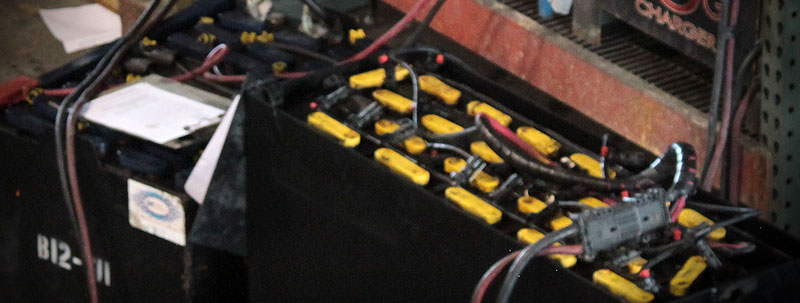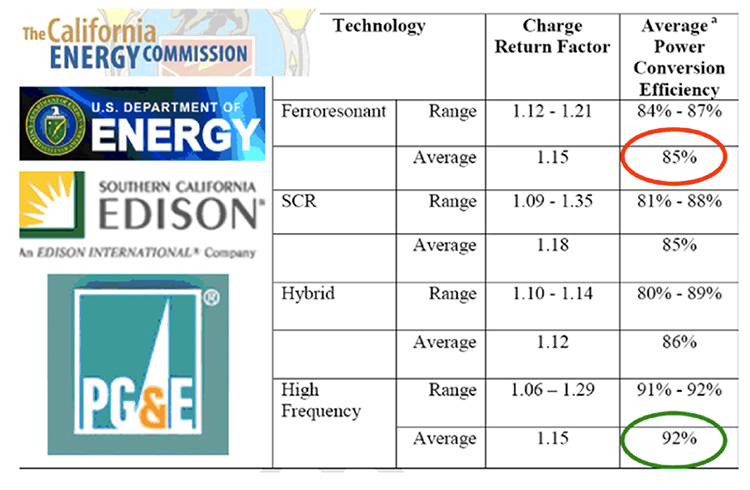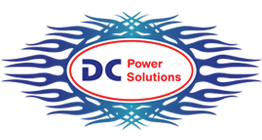Forklift Battery Chargers
- Technology & Recharging
-

Along with lead acid batteries we also can get you the charger you need to keep your forklift batteries fully charged. We are constantly looking into new technological advancements to ensure our customers have the best chargers available to them. It can be overwhelming looking at all of the equipment available and we understand this and are happy make sure you have the best product for your needs. - We work with industrial, ferroresonant, high frequency and flooded lead acid battery chargers. We aim to make your experience user-friendly with chargers that come ready-to-charge. Our chargers range up to 80-volts and our specialists can help you quickly find the charger you need whether you're looking for a low weight, small volume, high efficiency, or quick recharge--we can help you achieve your goals for your material handling and industrial needs. Need assistance?
Charger Technologies
Forklift battery chargers are evolving from crude controls to elegant transistor controlled advanced algorithms allowing for better charge acceptance to the batteries. This advanced technology allows for less heat and internal resistance resulting in better chemical action inside the lead acid battery. Read more about forklift battery charging and the 8-8-8 rule.
Many of our customers today are asking about the different technologies available in forklift battery charging and their history. To shed a little light on that question, here are some of the charger technologies available today and a brief historical account. The chargers are listed in Chronological order with the oldest technology first:
In the traditional chargers above # 1 – 3, I typically can see about a 1 % efficiency degradation per year mainly due to copper changes over time. That is to say a 10 year old Ferro or SCR charger will typically test at about 75 % AC Efficiency percentage versus the 85 % we see in a new Ferro and SCR Technology Charger.1.
Ferro Resonant Diode Controlled, Larger Transformer
Inexpensive, voltage dependent/controlled. As the voltage of the battery raises the current from the charger tapers until it eventually shuts off at a given voltage per cell or total voltage of battery. New Ferro Chargers have tested out at an average of 85% AC efficiency; however, it was found they require the most additional power on the DC Side, about a 20% overcharge.2.
Silicone Controlled Rectifier Rectifier Controlled (SCR)
Great for High Performance / Capacity batteries, but inefficient Energy Usage. This technology is great for the recharging; however it was found that the maintenance modes refresh rates and standby losses cause it to rate lower on the efficiency side of the testing in mid to older SCR Technology. New SCR Chargers have controls to limit standby losses and as a result, tested on average of 85 %. Efficiencies of older, uncontrolled chargers have a much lower percentage.3.
Hybrid Chargers SCR Controlled
With a higher start rate and voltage dependent until end of charge similar to Ferro technology; this was the highest efficiency technology in the United States until HF came here around 2004. Hybrid chargers taper down their DC Power returned to the battery until they finish at a fixed rate like an SCR. This technology gives a great recharge like the SCR but has a better efficiency. Testing was averaged 88% AC Efficiency and like an SCR, used a lower percentage DC Side.
4.
High Frequency Transistor Controlled
These newer-to-the U.S. Chargers use transistor controls and an advanced charge algorithm to better communicate power requirements to the battery resulting in greater AC Efficiency. This gives the battery a cooler recharge profile allowing for more energy to be absorbed by the battery. This will give the battery a longer life due to the better energy acceptance, lower heat and resulting better internal chemical transfers between active materials. By using the transistor controls, the power section / transformers can be smaller contributing to the lower cost and the tighter controls on efficiency as years go by.
Questions on timing of the chargers also come from our customers. Most of the technology above has been available since the late 1970’s. Europe has used the High Frequency chargers for years under our Hawker brand. That technology came to the US at the turn of the millennium due to energy efficiency concerns as we started to look to options for reducing losses and increasing AC power factors and efficiencies and of course with our acquiring of the Invensys Group.
The movement of Fast Charging from the Automotive sector into the material handling sector has seen some of the energy efficiency benefits translate over like larger power sections easily dividable into multiple ports. We have begun placing multiple high efficiency chargers in a single cabinet like the “Multi Circuit” product. This allows for better power usage, transformer sharing and single electrical inputs, reducing costs for power boxes and multiple lines.
The core of the study was to resolve the energy used to recharge a discharged battery. Below is the table from that study that explains the usage of power as expressed in percentages:

Table from the report on efficiencies, available on the Pacific Gas & Electric Utilities website
http://www.etcc-ca.com/images/stories/etccreportindustrialbatterychargersfinalv5.pdf
The test was completed by two Utility Companies commissioned by the Department of Energy. They tested the four technologies of chargers available from almost all of the manufacturers in the United States and Europe to get a good bench mark.
As you see the four technologies are represented. The vertical columns represent the DC Side of the power returned to the battery and the efficiency from the grid or wall on energy used.
Recharging Characteristics
DC Side from Charger to Battery: Charging battery back to 100%
DC Side / Tier 1:
Specific Gravity using the following charger technology:
1.
Ferro charger returns:
120% of DC AH removed during discharge
2.
SCR charger returns:
118% of DC AH removed during discharge
3.
HF charger returns:
115% of DC AH removed during discharge
As you will see in the study above the Charge Return Factor is the percent of DC Power returned to the battery. This is needed to circulate the electrolyte mixture to ensure that percentage is consistent at both the top and bottom of the battery cells. There is also a slight loss of energy in heat and cable loss. This accounts for the average above.
The second vertical column represents the energy used from the wall to the charger as expressed in a percentage of the AC efficiency. This percentage is explained as follows:
Recharging Characteristics
The efficiency of energy out of the Wall to the Charger.
DC Side / Tier 2:
Expressed in a percentage % of AC to DC converted.
1.
Ferro: 84% Energy Converted
2.
SCR: 85% Energy Converted
3.
HFs: 92% of Energy Converted
We see another eight percent savings on the AC side. When adding that to the five percent on the DC side we have a gain of 13% kWh used each charge to the battery when comparing new to new technology.
From here we can generate comparisons on energy used by technology to calculate costs, kWh used and resulting Carbon Footprints where we know generation mixes. From here the customers see Green Savings! We have also seen the charger become part of the Green Budgets like lighting and HVAC.
Case studies prepared for customers retrofitting their charger fleets where the cost of energy has changed over the years are available! These case studies show the energy saved along with the Utility Company rebates places the Return on Investments in those examples less than 24 months in many examples.
We are happy to assist you with analyses of your facilities to create a cases study, return on investments, and retrofits of the less energy efficient technology to that of the high efficiency HF products. Contact us. -
Battery Charger Service & Support
We have technicians specially trained to maintain and repair your battery chargers. With over 100 years of combined experience, our techs will keep your business moving. Along with our expertise we pride ourselves on our professional and timely service. Our techs are willing and able to help you with any of your motive power service needs. More about Service & Support
